Microsoft Fabric’s Defining European Moment
FabCon Europe 2025 in Vienna marked a pivotal moment in Microsoft’s data and AI strategy. Over four days, the sold-out conference brought together more than 4,000 attendees, 130+ sessions, and an entire ecosystem of customers, partners, and developers.
From the keynote stage to the community lounge, one message was clear: Microsoft Fabric has evolved from a unified analytics platform into the backbone of enterprise intelligence.
Satya Nadella and Arun Ulag opened the conference by emphasizing Fabric’s momentum — with 25,000+ organizations and 80% of the Fortune 500 already using the platform. That scale has now shifted Fabric from an integration story to a transformation one. The future of Microsoft’s data stack isn’t about connecting systems; it’s about enabling context-aware, autonomous decision-making across the enterprise.
My Pick of Top Announcements: From Unified Data to Contextual Intelligence
The conference’s Day 1 keynote, led by Amir Netz and the Fabric product team, showcased how Fabric is expanding its scope through graph, spatial, and interoperability innovations.
- Graph in Fabric (Preview): Built on LinkedIn’s battle-tested architecture, this feature brings large-scale relationship intelligence natively into the platform. Relationship intelligence is now native. Enterprises can model supply chains, customer networks, and fraud rings directly in Fabric—no external graph stack required. For more details refer to Graph Overview – Microsoft Fabric | Microsoft Learn
- Maps in Fabric (Preview): Real-time geospatial analytics meet the lakehouse. The addition of real-time geospatial intelligence allows organizations to visualize and analyze data in physical context. For logistics, retail planning, and smart manufacturing, this creates a bridge between digital insights and real-world operations. For more details refer to The Foundation for Powering AI-Driven Operations: Fabric Real-Time Intelligence | Microsoft Fabric Blog | Microsoft Fabric
Together, these capabilities mark Fabric’s shift from being a lakehouse to what can best be described as a cognitive data infrastructure — one that understands relationships, locations, and meaning, not just metrics.
Developer Experience: Fabric as an Application Platform
A major focus at FabCon Vienna was the developer ecosystem. Microsoft announced a set of tools designed to make Fabric not just a place for analytics but a platform for AI-native application development.
- The new Fabric Extensibility Toolkit enables teams to build and deploy custom extensions with built-in governance and security.
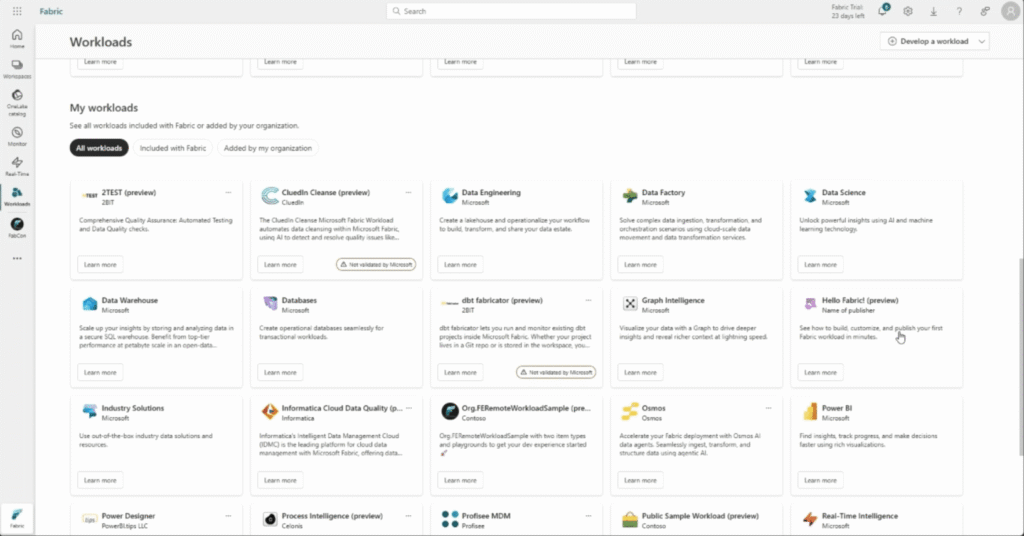
- Support for the Model Context Protocol (MCP) connects Fabric with AI-assisted tooling — allowing developers to auto-generate pipelines and semantic models. For more details refer to mcp/servers/Fabric.Mcp.Server at main · microsoft/mcp · GitHub
- Deep VS Code and GitHub Codespaces integration means developers can build directly within the environments they already use.
Collectively, these moves highlight Microsoft’s intent to make Fabric the build layer of enterprise AI — the place where data products and intelligent applications are created, not just analyzed.
Zero-ETL: Simplifying Integration, Accelerating Adoption
Among the most impactful announcements was the introduction of Zero-ETL mirroring for Oracle and BigQuery (Preview).
Sub-minute/near–real-time mirroring into OneLake reduces pipeline tax and helps de-risk “two-stack” estates. This feature allows data synchronization into OneLake with sub-minute latency — removing one of the biggest barriers to real-time analytics.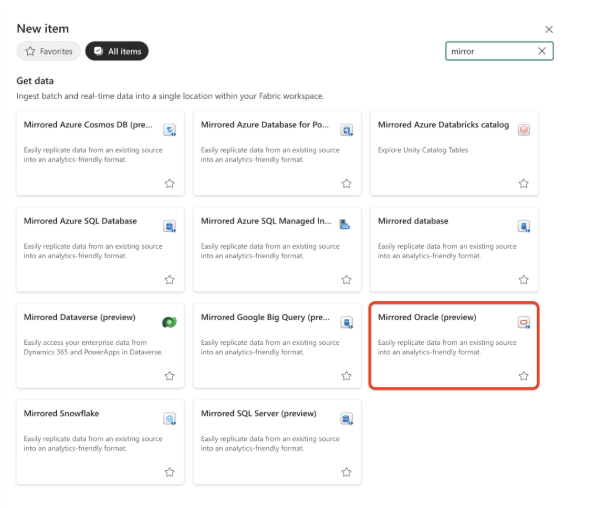
Every mirrored Oracle database reduces reliance on legacy ecosystems, while every BigQuery mirror extends Azure’s reach. The Lumen case study, showcasing a 10,000-hour reduction in manual data work, underscored the enterprise ROI this approach can deliver.
Microsoft also reinforced interoperability with Snowflake via Apache Iceberg — signaling confidence in an open, coexistence-first strategy rather than an exclusivity play.
Microsoft also extended Fabric data agents to support all mirrored databases, so you can ask questions about your external database data. Please check my detailed article on Fabric Data Agent here
For more details check Mirroring for Oracle in Microsoft Fabric (Preview) | Microsoft Fabric Blog | Microsoft Fabric
Enterprise-Grade Performance and Security
Performance improvements were another major theme.
The Fabric Data Warehouse now delivers a 36 % performance boost and 40 + enhancements since mid-2024.
On the security front, Microsoft rolled out Azure Private Link, customer-managed encryption keys, and workspace IP filtering — all designed to meet the strictest enterprise compliance standards.
Microsoft also launched OneLake security into full preview and creating a new tab in the OneLake catalog called Secure, where you can manage the security and permissions for all your data items. Along with this new tab, Microsoft also released OneLake catalog Govern tab into general availability.
Microsoft enriched Fabric extensibility with the preview of a new OneLake Table API, which lets apps use GET and LIST calls to discover and inspect OneLake tables stored in either Iceberg or Delta format using Fabric’s security model.
For workspace owners, Microsoft released a preview of OneLake diagnostics that allows you to capture all the data activity and storage operations for a specific workspace into any lakehouse in the same capacity.
A detailed overview of all of the existing capabilities are available in the Fabric Security Whitepaper.
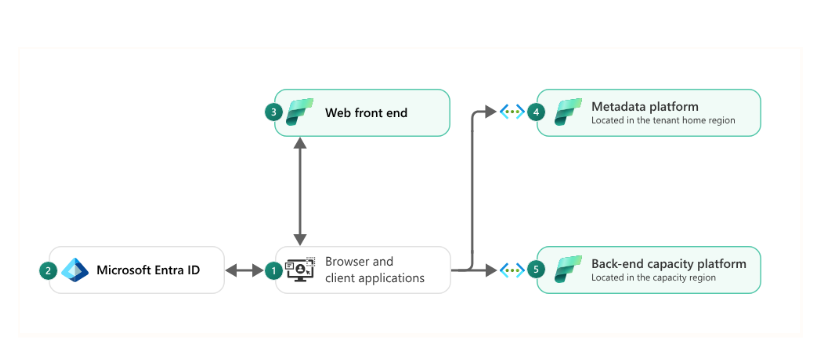
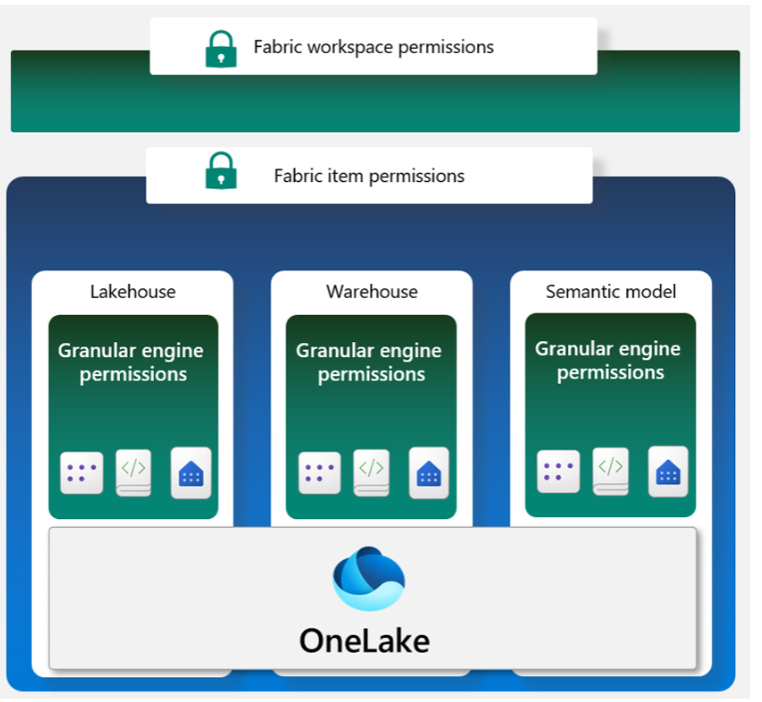
These capabilities reinforce Fabric’s positioning as a production-ready, enterprise-secure intelligence platform.
Ecosystem Strategy: Orchestrating, Not Owning
Microsoft also spotlighted new partnerships with Neo4j, ESRI, and Lumel — integrating specialized analytics engines directly into Fabric.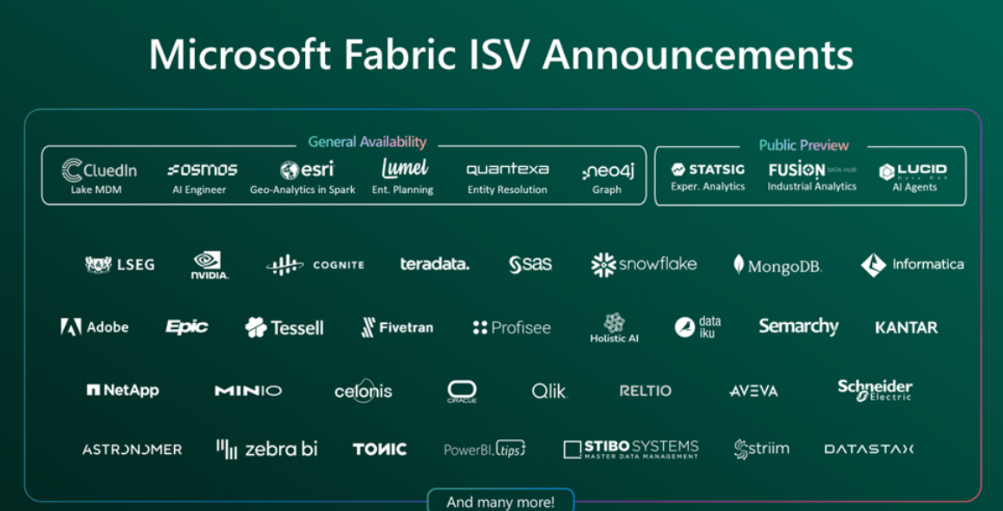
This “orchestration over ownership” strategy reflects a mature understanding of enterprise ecosystems. Instead of competing with niche solutions, Microsoft is turning Fabric into a governed interoperability layer, where partner tools operate under unified security and governance.
It’s similar to AWS’s marketplace model but differentiated by AI-first integration and Copilot-assisted extensibility — key ingredients in Microsoft’s long-term ecosystem play.
For more details refer to The Power of ISVs: Unleashing Innovation in Microsoft Fabric | Microsoft Fabric Blog | Microsoft Fabric
Product Roadmap: The Architecture of Enterprise Intelligence
Looking ahead, FabCon Vienna outlined Microsoft’s vision for Fabric’s next phase — one focused on autonomous intelligence orchestration.
The roadmap centers on three interconnected layers:
- Fabric – the AI-ready data substrate powering governance, lineage and reasoning.
- OneLake – the enterprise memory where all data types coexist securely, with open formats and mirroring
- Copilot – the interaction layer translating human intent into machine execution.
This architecture signals Microsoft’s broader ambition: to turn Fabric into the enterprise operating system for AI — a control plane that unites data, context, and reasoning.
Future priorities will likely include real-time analytics expansion, agentic data automation, and cross-tenant governance — enabling global organizations to collaborate seamlessly without duplicating data.
What CXOs Should Do Next (Prescriptive)
- Prioritize Zero-ETL wins: Mirror top-5 operational systems (Oracle/BigQuery) into OneLake; retire redundant pipelines and measure reclaimed engineering hours.
- Stand up a Graph pilot: Start with a high-value network problem (supply risk, anti-fraud, churn contagion). Measure lift from connected features over tabular models.
- Bring place into the model: Use Maps for store/network planning, telematics, and last-mile ops; tie to inventory and labor to reduce “model-reality” gaps.
- Treat Fabric as an application platform: Fund 2–3 agentic workflows (claims adjudication, pricing ops, field service triage) using the Extensibility Toolkit + MCP. Ship a data product, not a dashboard.
- Raise the security baseline: Enforce Private Link, CMK, and workspace IP controls across regulated workspaces before scale-out.
- Adopt an orchestration mindset: Plug in specialists (graph, geospatial, viz) under Fabric guardrails; avoid parallel stacks that fracture lineage and identity.
Final Thoughts: Execution Will Define the Era
FabCon Europe 2025 was more than a showcase of new features — it was Microsoft’s statement of direction.
Fabric is no longer an analytics consolidation story; it’s a strategic foundation for enterprise intelligence. The platform now has:
- Proven enterprise adoption
- Technical maturity and performance benchmarks
- A forward-looking roadmap built on openness and AI integration
The next chapter depends on execution — maintaining consistency, pricing transparency, and ecosystem scalability.
If Microsoft delivers, Fabric will not just compete with other data platforms; it will redefine what a data platform means in the AI-first enterprise era.
Views: 3.2K

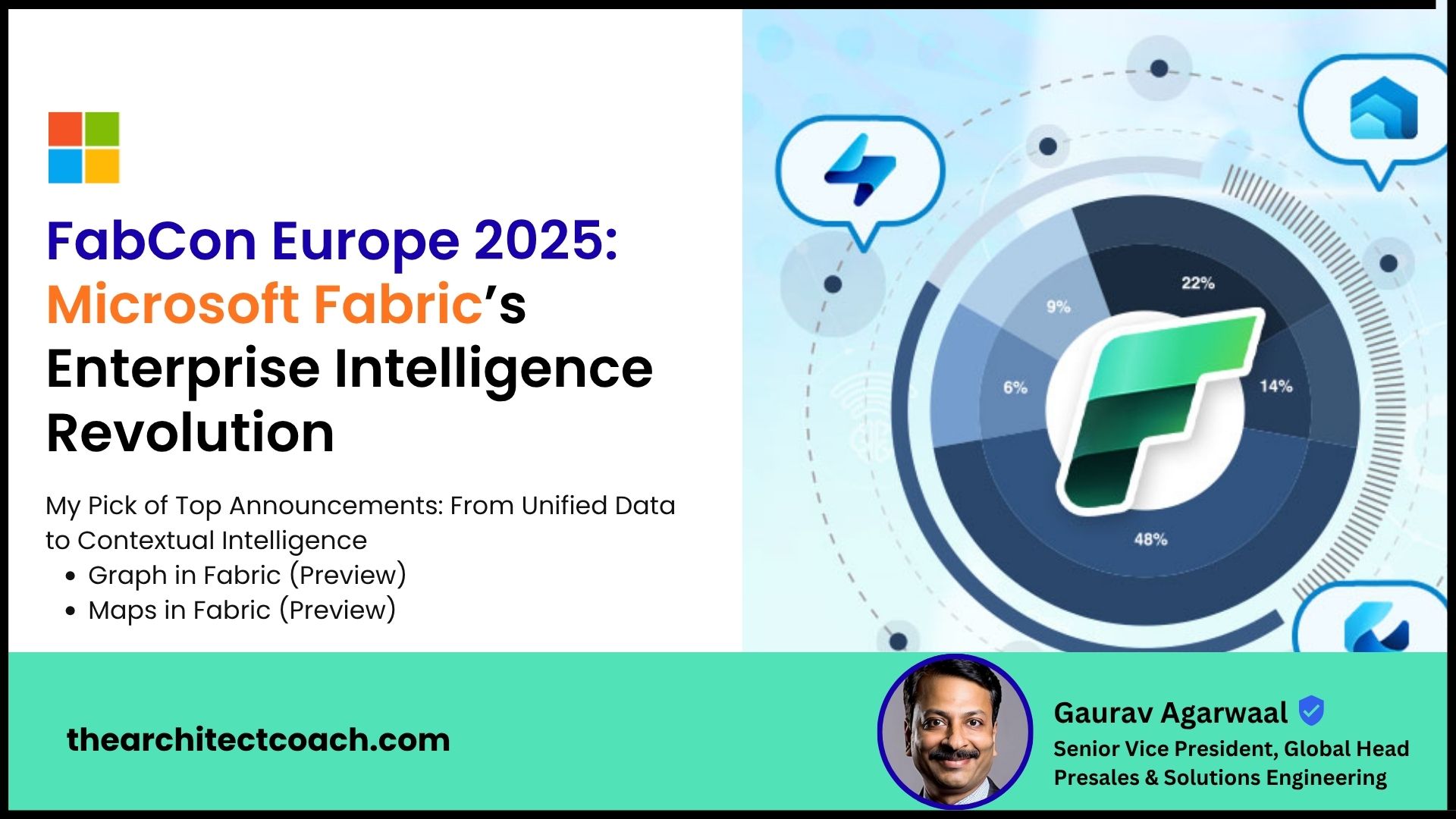
Your writing is a true testament to your expertise and dedication to your craft. I’m continually impressed by the depth of your knowledge and the clarity of your explanations. Keep up the phenomenal work!
Thanks I have recently been looking for info about this subject for a while and yours is the greatest I have discovered so far However what in regards to the bottom line Are you certain in regards to the supply
Thank you for the auspicious writeup It in fact was a amusement account it Look advanced to more added agreeable from you By the way how could we communicate
niceee
Very great visual appeal on this internet site, I’d value it 10 10.